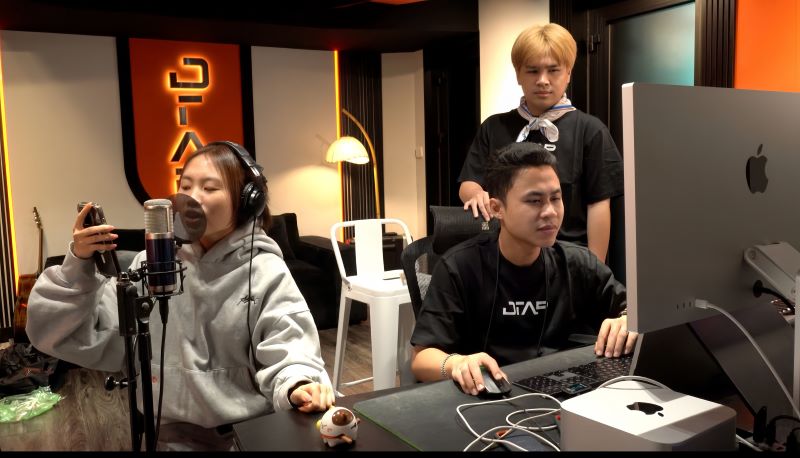Breakthrough strategy helps Phuong My Chi – DTAP win in the quarter-finals of “Sing! Asia 2025”
22/07/25 11:08 sáng | Luợt xem : 108
Before episode 6 of “Sing! Asia 2025”, Phuong My Chi and DTAP entered a fierce stage of strategic research and analysis. They did not choose a random opponent but proactively “challenged” Hoang Linh in the quarter-finals. The female singer stands out with her vocal technique and style of combining electronic “jazz” music with Chinese folk sounds. This point is said to be similar to the musical color that Phuong My Chi is pursuing. Choosing to confront head-on, Phuong My Chi and DTAP exploited that intersection as a material for artistic dialogue. If Hoang Linh reconstructed Chinese music in a non-traditional way, Phuong My Chi created a Vietnam that is both culturally deep and full of contemporary breath.

The song “Bong Phu Hoa” once made a splash in Vietnam thanks to its unique structure, Asian-style melodiousness, and folk-infused melody. Under the hands of DTAP, the arrangement performed on stage “Sing! Asia” was refined, raising the tone at the climax to create a space to fully showcase Phuong My Chi’s vocal technique and stage presence.

Not only that, the chanting part of the song was also reversed by DTAP and placed first to make an impression right from the beginning of the competition. With four six-eight verses inspired by “The Tale of Nam Xuong”, DTAP puts the listener face to face with the pain, clearly defining the cultural material from the very first second.

In the chanting part, DTAP used the Dan Co, a musical instrument associated with Southern amateur music, as the sound axis, leading the emotions throughout the performance. The sound of the instrument evokes the Southern artistic space, recreating the chanting spirit typical of this genre. The sound of the Dan Co in a modern arrangement shows respect for national heritage, while also expressing a creative conservation mindset, contributing to creating a unique mark for the performance on the international stage.

Furthermore, the musical color of the Buddhist folk prayer ritual, a sacred ritual closely associated with the spiritual life of the Vietnamese people, is also brought to the international stage. Incorporating this element into the work is not only to create artistic depth, but also a way to introduce little-known aspects of Vietnamese cultural life.
With the desire to bring national culture to the world, Phuong My Chi and DTAP not only want to introduce Vietnamese melodies to international audiences, but also hope that they feel and understand the depth of Vietnamese lyrics and stories. With that spirit, the team chose to translate the chorus, helping the judges and viewers in China easily access the meaning of the work “The Story of a Nam Xuong Girl”, a literary symbol rich in humanistic values.

Phuong My Chi’s choice to translate a section of lyrics into Chinese does not dilute the Vietnamese identity. On the contrary, it is a cultural bridge that helps international audiences gain deeper access to the spirit of Vietnamese works. When the lyrics are sung in the native language, the value of the work is not only preserved but also spread, because a heritage only truly lives when it is understood and touches the hearts of listeners in many different cultures.
After the performance of “ Bong Phu Hoa” at “Sing! Asia”, Phuong My Chi expressed her concerns and worries about her Chinese pronunciation. More importantly, whether the spirit of Vietnamese culture can truly touch the hearts of the judges and international audiences. For her, each performance is not simply a competition, but an opportunity to introduce national identity on the regional stage. Above all, the performance “Bong Phu Hoa” at “Sing! Asia 2025” is like a musical declaration of a generation of young artists: daring to renew their heritage, daring to bring the national spirit to the international level with their voices, strategies and hearts.
